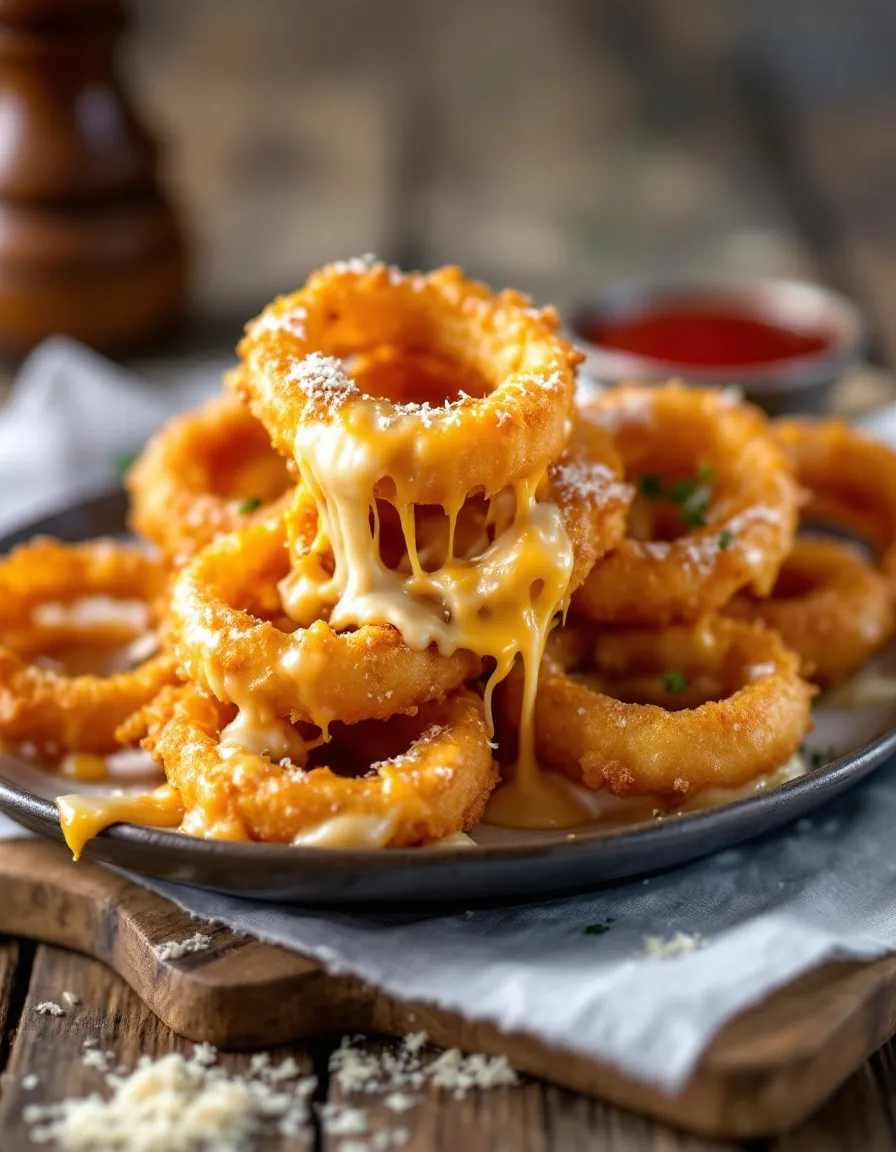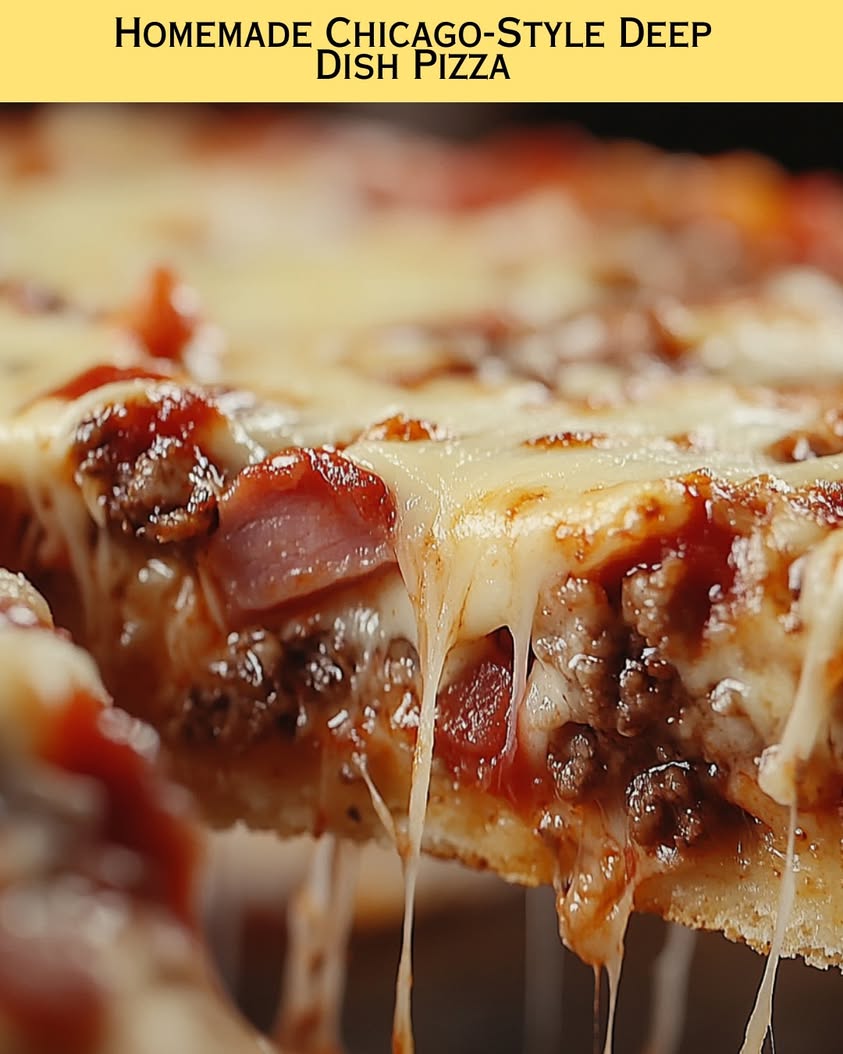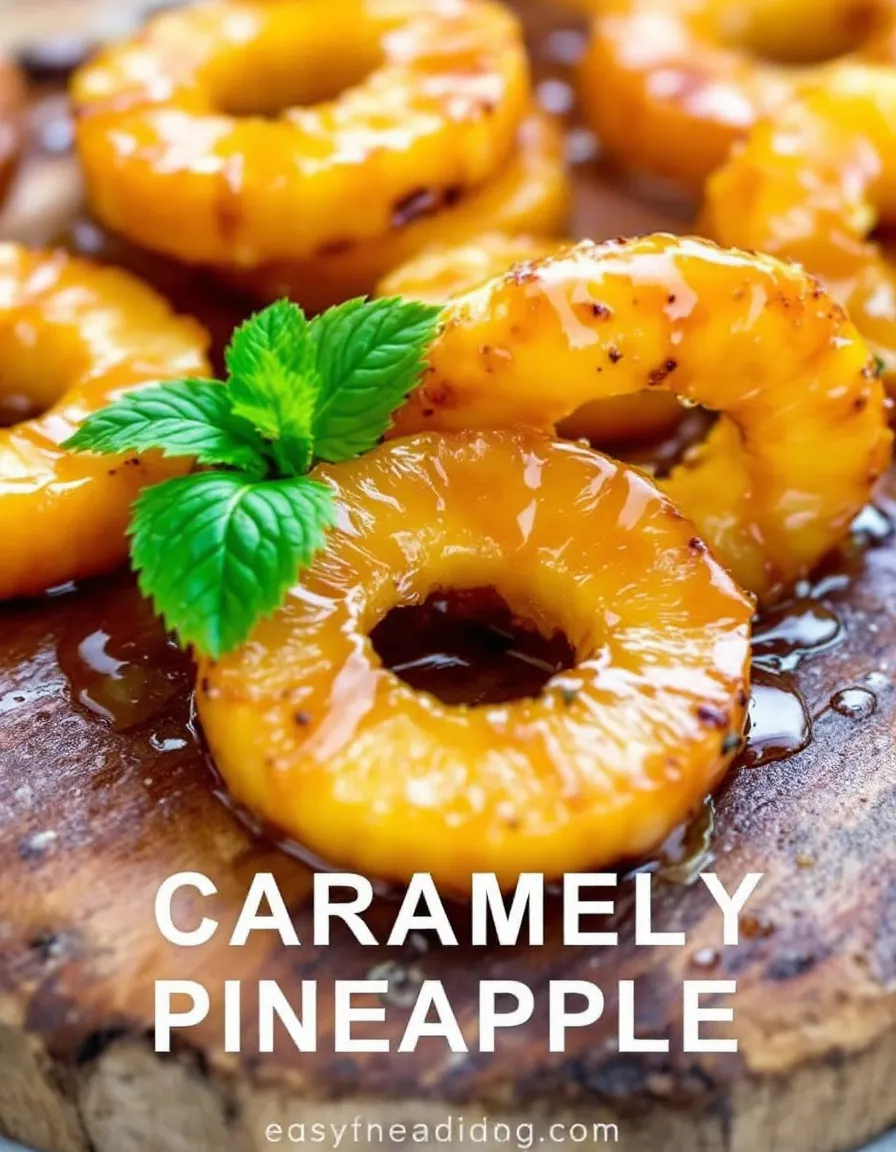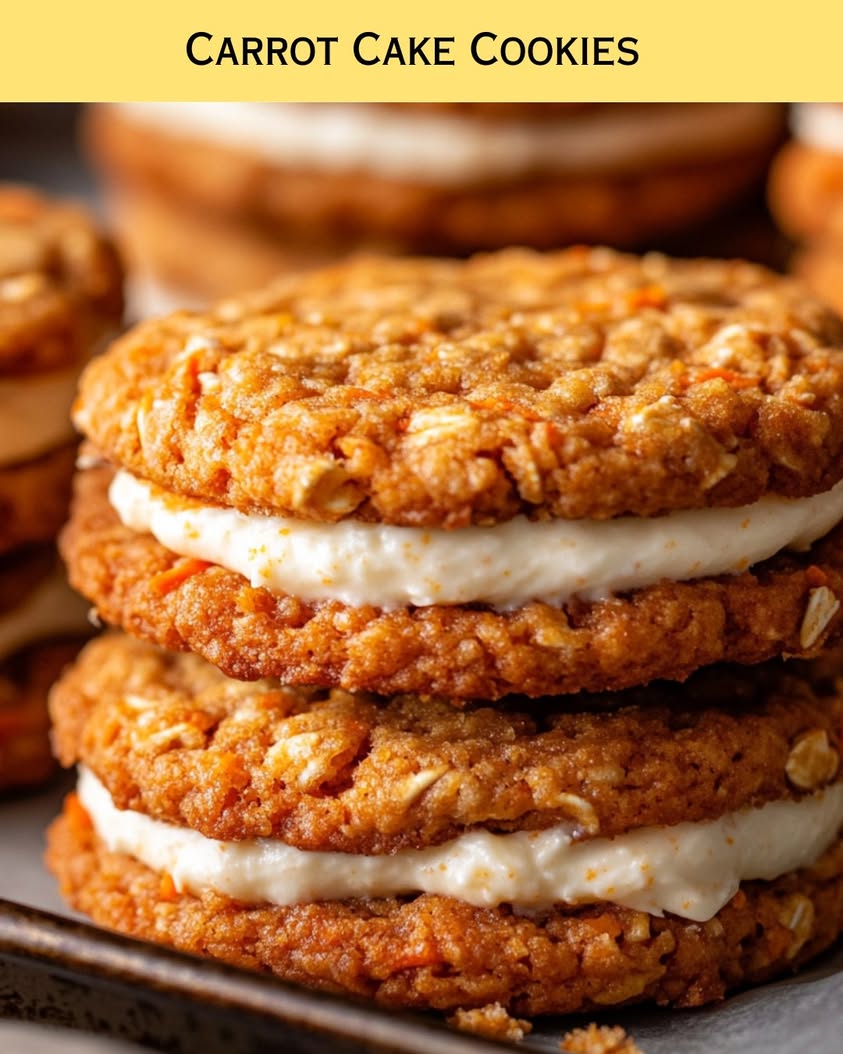Blueberry Cheesecake Cookies: A Delightful Twist on a Classic Dessert
Indulging in the flavors of summer has never been easier than with these Blueberry Cheesecake Cookies. Imagine a cookie that not only satisfies your sweet tooth but also transports you to a warm, sunlit kitchen where fresh blueberries burst with flavor, mingling beautifully with rich cream cheese. These cookies offer a delightful blend of textures with their crisp edges and soft, gooey centers, creating a satisfying treat perfect for any occasion.
Every bite of these Blueberry Cheesecake Cookies is a celebration of flavors; the creamy cheesecake filling pairs impeccably with the sweetness of ripe blueberries, making them the ideal dessert for gatherings, coffee breaks, or simply enjoying with a book on a lazy afternoon. As you bake these delightful treats, your kitchen will fill with the inviting aroma of baked goods, captivating everyone with the promise of deliciousness waiting to be savored.
Quick Recipe Highlights
- Flavor Profile: A perfect balance of sweet and tangy, these cookies feature a creamy cheesecake base highlighted by the freshness of blueberries.
- Texture: Each cookie offers a delightful contrast of crispiness on the outside and a soft, chewy center enriched with a cheesecake-like filling.
- Aroma: The warm scent of baked cookies blended with the fruity essence of blueberries fills the kitchen with a comforting and inviting aroma.
- Visual Appeal: Vibrant blueberries peeking through the golden-brown cookies create a stunning visual impact, perfect for impressing guests.
- Skill Level Needed: A medium skill level is required as it involves creating a filling, shaping the cookies, and ensuring the perfect baking time.
- Special Equipment: Basic baking tools are needed, including mixing bowls, an electric mixer, baking sheets, and parchment paper.
Recipe Overview
- Difficulty Level: These Blueberry Cheesecake Cookies are classified as medium difficulty due to the requirement of preparing a cheesecake-style filling, but the process is straightforward and approachable for most bakers.
- Category: These cookies fall under the dessert category, combining elements of classic cheesecake and cookies, making them a unique choice for dessert lovers.
- Cuisine: Embracing a fusion of American baking traditions, these cookies revitalize the beloved cheesecake within a portable format, perfect for potlucks and gatherings.
- Cost: With an estimated cost of $10-$12 for ingredients, this recipe is an affordable way to indulge in gourmet flavors at home.
- Season: Best enjoyed in summer when blueberries are in season and at their sweetest, these cookies celebrate the essence of summer flavors.
- Occasion: They are ideal for various occasions, including birthday parties, picnics, or as a delightful treat during family gatherings.
Why You’ll Love This Recipe
The combination of taste and texture in Blueberry Cheesecake Cookies is truly irresistible. The sweet burst of blueberries contrasts beautifully with the rich, creamy filling, all encased in a cookie that has a delightful chew. Each mouthful is an explosion of flavor that brings a smile to your face and makes you crave another.
One of the best features of these cookies is their convenience. Unlike traditional cheesecakes that require time to bake and cool, these cookies come together in just a few simple steps, making them a quick sweet treat. You can whip up a batch for unexpected guests or surprise your family with a freshly baked dessert without the hassle of complicated steps.
Not only are these cookies a delightful indulgence, but they also offer nutritional benefits. Blueberries are packed with antioxidants, fiber, and vitamins, making each cookie a little healthier choice compared to processed sweets. Plus, the cream cheese filling adds a dose of protein to each bite, elevating the typical cookie experience.
When it comes to social gatherings, these cookies shine. Their unique flavor and beautiful appearance make them a conversation starter. Friends and family will admire your baking skills while eagerly reaching for seconds, making any gathering feel more festive and memorable.
Cost-effectiveness remains a significant advantage with this recipe. The ingredients are simple and readily available, ensuring that you can create a gourmet dessert without breaking the bank. This affordability, coupled with the delightful flavors, makes these cookies a winner in any household.
Historical Background and Cultural Significance
The origin of the cheesecake dates back to ancient Greece, where it was served to athletes during the first Olympic Games. Over time, cheesecakes evolved into various regional variations, with the American style becoming particularly popular. This blend of heritage and modern innovation inspires the creation of Blueberry Cheesecake Cookies, transforming a classic dessert into an accessible treat.
Culturally, cheesecakes have always been associated with celebrations and special occasions, from birthdays to holiday festivities. This significance carries over into these cookies, elevating them beyond a simple sweet treat into something that can bring joy and connection among friends and family.
The evolution of cheesecake recipes showcases the adaptability of culinary traditions. As ingredients became more accessible and baking techniques were refined, craftspeople began to experiment, resulting in diverse flavors and forms, including the delightful fusion of cookies and cheesecakes that we experience today.
Regional variations abound in cheesecake recipes, often incorporating fruits and spices unique to specific cultures. These Blueberry Cheesecake Cookies give a nod to the tradition of incorporating fresh, seasonal fruits, honoring the time-honored practice of creating desserts that celebrate local bounty.
Ingredient Deep Dive
Blueberries: Blueberries have long been a popular fruit in American cuisine, cherished not only for their sweet-tart flavor but also for their numerous health benefits. These small fruits are packed with antioxidants, vitamins, and minerals, making them a nutritious choice for any dessert. When selecting blueberries, look for firm, plump berries with vibrant color. Store them in the refrigerator to maintain their freshness, and they can also be frozen for future use. If blueberries aren’t available, consider using other berries like raspberries or blackberries for a similar taste profile.
Cream Cheese: Cream cheese serves as the heart of the cheesecake component, providing that irresistibly smooth texture and tangy flavor. Originating in the 19th century, cream cheese has become a staple in desserts. It is rich in protein and calcium, which slightly aids in nutritional density. Always choose full-fat cream cheese for the best texture in the filling, and store it in the refrigerator once opened. For a lighter option, consider using low-fat cream cheese, though it may slightly alter the consistency of the filling.
Common Mistakes to Avoid
- Overmixing the dough: Mixing too vigorously can develop the gluten and lead to tougher cookies. Mix until just combined.
- Not chilling the dough: Skipping the refrigeration step can result in flat cookies, as chilling helps them maintain shape.
- Using warm ingredients: Ensure all dairy products, especially cream cheese, are at room temperature for easy blending and a smooth filling.
- Baking on ungreased sheets: Not prepping your baking sheets can lead to cookies sticking or losing their shape while baking.
- Underbaking: Cookies should be slightly golden around the edges; underbaking will result in overly soft cookies.
- Ignoring oven temperature: An uncalibrated oven can lead to improper baking; use an oven thermometer for accuracy.
- Using stale ingredients: Check the freshness of your baking powder and baking soda as leavening agents lose potency over time.
- Not spacing cookies: Crowding the baking sheet leads to cookies that spread into each other and become misshapen.
- Skimping on toppings: For an enhanced flavor experience, be generous with blueberries both in the dough and on top.
- Not letting cookies cool: Allowing cookies to cool on the baking sheet for a few minutes before transferring avoids breakage.
Essential Techniques
Making the Cream Cheese Filling: Creating a smooth, creamy cheesecake filling is crucial for achieving the perfect Blueberry Cheesecake Cookies. Start with room temperature cream cheese to prevent lumps. Beat the cream cheese until smooth, then incorporate sugar, vanilla, and an egg. Avoid overmixing to maintain the desired texture. Visual cues for success include a smooth, fluffy consistency without any lumps.
Chilling the Dough: Chilling the cookie dough enhances its flavor and texture while preventing it from spreading too much in the oven. After preparing the dough, cover it tightly and refrigerate for at least 30 minutes. Properly chilled dough will feel firmer and be easier to handle. If the dough is too cold, let it sit for a few minutes to soften slightly before forming cookies.
Pro Tips for Perfect Blueberry Cheesecake Cookies
1. Use fresh, seasonal blueberries for the best flavor and texture. Frozen berries can release excess moisture and alter the cookie’s consistency.
2. Adjust sugar levels to your taste preference; this recipe allows for some flexibility if you prefer a less sweet cookie.
3. Consider adding lemon zest to the filling for an extra layer of flavor and brightness. It complements the blueberries beautifully.
4. Don’t skip the chilling step! It’s essential for creating cookies that hold their shape without becoming too flat.
5. If you want a swirl effect, gently ripple the blueberries through the cream cheese filling with a toothpick or knife for a beautiful presentation.
6. Experiment with adding white chocolate chips to the dough for a decadent twist on flavor and texture.
7. Allow the cookies to cool completely before storing them to maintain their softness and moisture.
8. Serve warm cookies with a scoop of vanilla ice cream for a dessert that’s truly irresistible!
Variations and Adaptations
One popular variation is using different berries, such as raspberries or strawberries, to swap out the blueberries for a unique flavor twist. Seasonal adaptations are also fun; consider incorporating pumpkin or spice flavors during autumn months to create a delightful seasonal cookie.
For those with dietary restrictions, these Blueberry Cheesecake Cookies can be adapted to suit gluten-free or vegan diets by using appropriate flour substitutes and dairy-free cream cheese. Flavor variations can include add-ins like crushed nuts for added texture or different extracts like almond or coconut for a unique twist.
Similarly, presentation can change according to occasion; you could dress them up with a dusting of powdered sugar or a drizzle of chocolate sauce for a more festive look during celebrations.
Serving and Presentation Guide
When serving Blueberry Cheesecake Cookies, consider portion sizes for balance. Each cookie can be plated slightly apart to showcase their beautiful colors and textures. For an elegant touch, add a small sprig of mint or edible flowers as garnish.
To enhance flavor profiles, pair the cookies with a dollop of whipped cream or a scoop of ice cream. Temperature considerations suggest serving these delights at room temperature for the ideal combination of crispy edges and soft centers.
For a rustic look, consider placing cookies in a decorative basket lined with parchment paper, allowing guests to grab their servings easily during gatherings. Presentation can elevate the dessert experience, making these cookies a hit no matter where they are served.
Wine and Beverage Pairing
Pair these delightful cookies with a sweet dessert wine like Riesling or Moscato, which complement the sweetness of the blueberries and creaminess of the cheesecake filling. For those looking for non-alcoholic options, a refreshing iced tea with a hint of lemon or mint will harmonize well with these cookies.
For a cozy evening treat, consider enjoying the cookies with a freshly brewed cup of coffee or tea. A lightly roasted coffee with bright notes will enhance the blueberry flavors, while herbal teas can introduce lighter notes that pair well with the richness of the cookie.
Temperature is key; ensure that any beverages served are chilled if they are meant to be refreshing, or warm if you’re looking for a comforting pairing with the cookies.
Storage and Shelf Life
To preserve the freshness of your Blueberry Cheesecake Cookies, store them in an airtight container at room temperature for up to five days. This prevents them from drying out while still keeping them soft.
If you want to extend their shelf life even further, consider freezing the cookies. Allow them to cool completely, then individually wrap each cookie in plastic wrap and place them in a freezer-safe container. They can be frozen for up to three months. When you’re ready to enjoy them, simply thaw at room temperature or reheat in the oven for a few minutes for that fresh-baked taste.
Signs of spoilage can include a change in texture or a noticeable sour smell, so be vigilant about proper storage. Reheating guidelines suggest using a low oven temperature to maintain the integrity of the cookies without drying them out, ideally around 300°F for 5-7 minutes.
Make Ahead Strategies
To save time when preparing for a gathering, consider making the cookie dough and filling ahead of time. The dough can be prepared and placed in the refrigerator for up to two days before baking. This makes it incredibly easy to whip up a batch of cookies at a moment’s notice.
Alternatively, you can bake the cookies and allow them to cool completely before storing them in an airtight container. They can stay fresh this way for several days, making them ideal for make-ahead planning.
Quality impact assessments suggest that while you can prepare in advance, freshly baked cookies yield the best flavor and texture, especially if you intend on serving them to guests. For the freshest taste, bake the cookies on the day of your event or gathering.
Scaling Instructions
Scaling the Blueberry Cheesecake Cookies recipe is straightforward. To halve the recipe, simply divide each ingredient in half and adjust the baking time, keeping a close eye on doneness as smaller batches may bake faster.
If you’re looking to double or triple the recipe for larger gatherings, accuracy is key. More significant quantities might require larger mixing bowls and possibly two baking sheets. This can help ensure even baking and prevent overcrowding on the sheets, which could affect the cookies’ shape.
Consider timing modifications as the baking time can slightly vary when adjusting batch sizes. Keep the size of your cookies consistent to ensure they bake uniformly. Finally, remember that storing larger quantities in airtight containers may require more space, so plan accordingly.
Nutritional Deep Dive
The Blueberry Cheesecake Cookies provide a balanced mix of macronutrients, with a focus on carbohydrates from the flour and sugar, protein from the cream cheese, and healthy fats contributed by the cream cheese and butter.
Micronutrient analysis shows that blueberries are an excellent source of vitamins C and K, making them a nutritious addition to the cookie. Each cookie also contributes calcium from the cream cheese, which is vital for bone health.
In terms of health benefits, these cookies can be enjoyed as an occasional treat, especially considering the nutritional value of the blueberries. However, for those managing portion sizes, considering this as an occasional indulgence is essential for balanced dietary habits.
Weight management tips for enjoying these cookies include moderation and pairing them with protein or fiber-rich foods to maintain satiety and minimize cravings. A serving size of one cookie can fit into a balanced diet when enjoyed alongside other healthy options.
Dietary Adaptations
For gluten-free adaptations, substitute all-purpose flour with a 1:1 gluten-free blend to maintain the texture and integrity of the cookies. Make sure the blend contains xanthan gum for optimal results.
Dairy-free modifications can include using vegan cream cheese and plant-based butter. This preserves the richness of the filling while being suitable for lactose intolerant individuals.
Vegan versions can easily be achieved by following dairy-free adaptations and replacing eggs with flaxseed or chia eggs. Combining 1 tablespoon of ground flaxseed or chia seeds with 2.5 tablespoons of water creates an effective egg substitute.
For low-carb or keto-friendly cookies, incorporate almond flour in place of all-purpose flour, and use erythritol or another low-carb sweetener to keep the sugar content low while achieving a sweet flavor.
Troubleshooting Guide
If you encounter texture issues with your cookies, such as them being too dry, ensure that you are measuring flour accurately. Spoon flour into your measuring cup rather than scooping directly from the container to avoid overpacking.
Flavor balance can sometimes tip towards too sweet; consider adding a pinch of salt or a splash of lemon juice to enhance flavor depth without overwhelming sweetness.
Temperature problems often arise from an uncalibrated oven. An oven thermometer can help ensure your cookies bake at the correct temperature for the desired time.
Should you face challenges with equipment, using a stand mixer or hand mixer ensures thorough incorporation with minimal effort, but be careful not to overmix, which can lead to denser cookies.
If you need to substitute ingredients but are concerned about timing, remember that butter substitutes should mirror the fat content, and adjustments in baking time may be needed depending on the ingredients used.
Recipe Success Stories
Community feedback has been overwhelmingly positive, with many bakers praising the unique flavors and ease of preparation. A notable adaptation involved adding lemon zest to the cream cheese filling, which enhanced the overall taste profile significantly.
Several readers have shared their variations, including incorporating chocolate chips or lemon juice for a refreshing twist, proving the versatility of the recipe.
Photography tips have also emerged from the community, suggesting the use of natural lighting to capture the vibrant colors of the cookies perfectly, enhancing visual appeal on social media.
Many have shared their stories of serving these cookies at gatherings, highlighting the joy and excitement they bring to special occasions, reinforcing the success and popularity of this delightful recipe.
Frequently Asked Questions
Can I use frozen blueberries instead of fresh?
Yes, you can use frozen blueberries, but it’s best to thaw and drain them before adding them to your cookie dough to prevent excess moisture, which can affect texture.
How should I store leftover cookies?
Store leftover Blueberry Cheesecake Cookies in an airtight container at room temperature for up to five days or freeze them for longer shelf life.
Can I make the dough ahead of time?
Absolutely! You can prepare the dough ahead of time and refrigerate it for up to two days before baking, allowing for quick and easy freshly baked cookies.
What if my cookies spread too much while baking?
If your cookies spread too much, it could be due to warm dough. Ensure that your dough chills adequately before baking to prevent excessive spreading.
Do I need to chill the dough?
Yes, chilling the dough is essential for achieving the right texture and preventing the cookies from spreading too much while baking. Aim for at least 30 minutes in the fridge.
What should I do if I don’t have cream cheese?
If you don’t have cream cheese, you can substitute it with mascarpone cheese or a dairy-free cream cheese alternative for similar results in taste and texture.
Can I freeze these cookies?
Yes, cooked cookies can be frozen. Wrap them individually in plastic wrap and then place them in a freezer-safe container to preserve freshness.
How can I enhance the flavor?
You can enhance the flavor by adding ingredients like lemon zest, vanilla extract, or even a dash of cinnamon to the cookie dough or filling.
What are the best ways to serve these cookies?
These cookies can be enjoyed warm with whipped cream or a scoop of ice cream. They are also delicious at room temperature paired with coffee or tea.
How can I make these cookies vegan?
To make these cookies vegan, substitute the cream cheese with a vegan cream cheese alternative and use a flax egg in place of the chicken egg.
Additional Resources
For those interested in expanding their baking repertoire, there are many related recipes to explore, like traditional blueberry pies or various fruit-based desserts. Technique guides on cookie baking and cream cheese desserts can also enhance your skills and confidence in the kitchen.
Additionally, acquiring quality ingredients can elevate your baking experience. Using fresh, organic blueberries can noticeably improve the flavor and appearance of your cookies.
If you’re interested in seasonal variations, consider experimenting with different fruits based on availability, as this can add variety and excitement to your baking.
Equipment recommendations include quality mixing bowls, measuring cups, and a reliable oven thermometer for consistent results every time.
Join the Conversation
We invite you to share your experiences with making these Blueberry Cheesecake Cookies! Share your photos on social media using our hashtag designated for this recipe, and let others see your beautiful creations.
Feel free to engage with the community by submitting your variations or suggestions for future desserts. Your feedback can help others discover and enjoy this delightful recipe even more, allowing everyone to partake in these delicious blueberry-infused treats!
The Recipe
Blueberry Cheesecake Cookies
Serves: 18 cookies
Prep Time: 15 mins
Cook Time: 10 mins
Total Time: 25 mins
Kitchen Equipment Needed
- Mixing bowls
- Electric mixer
- Baking sheets
- Parchment paper
- Spatula
Ingredients
- 1 cup all-purpose flour
- 1/2 cup sugar
- 1/4 teaspoon baking powder
- 1/4 teaspoon baking soda
- 1/8 teaspoon salt
- 1/2 cup unsalted butter, softened
- 4 oz cream cheese, softened
- 1/2 teaspoon vanilla extract
- 1 egg
- 1 cup fresh blueberries
Directions
- Preheat the oven to 350°F (175°C) and line baking sheets with parchment paper.
- In a bowl, mix together the flour, baking powder, baking soda, and salt.
- In another bowl, beat the softened butter and sugar until creamy, then add the cream cheese and mix until smooth.
- Add the egg and vanilla extract, mixing until combined.
- Gradually add the dry ingredients to the wet mixture, mixing just until combined.
- Fold in the blueberries gently to avoid breaking them.
- Scoop cookie dough onto the prepared baking sheets, spacing them apart.
- Bake in the preheated oven for 10-12 minutes or until the edges are golden.
- Let cool on the baking sheet for a few minutes before transferring to a wire rack to cool completely.
Recipe Notes
- For a creamier filling, consider adding another ounce of cream cheese.
- Chocolate or lemon zest can be added for an unexpected twist.
- If using frozen blueberries, thaw them and pat dry before adding to the dough.




